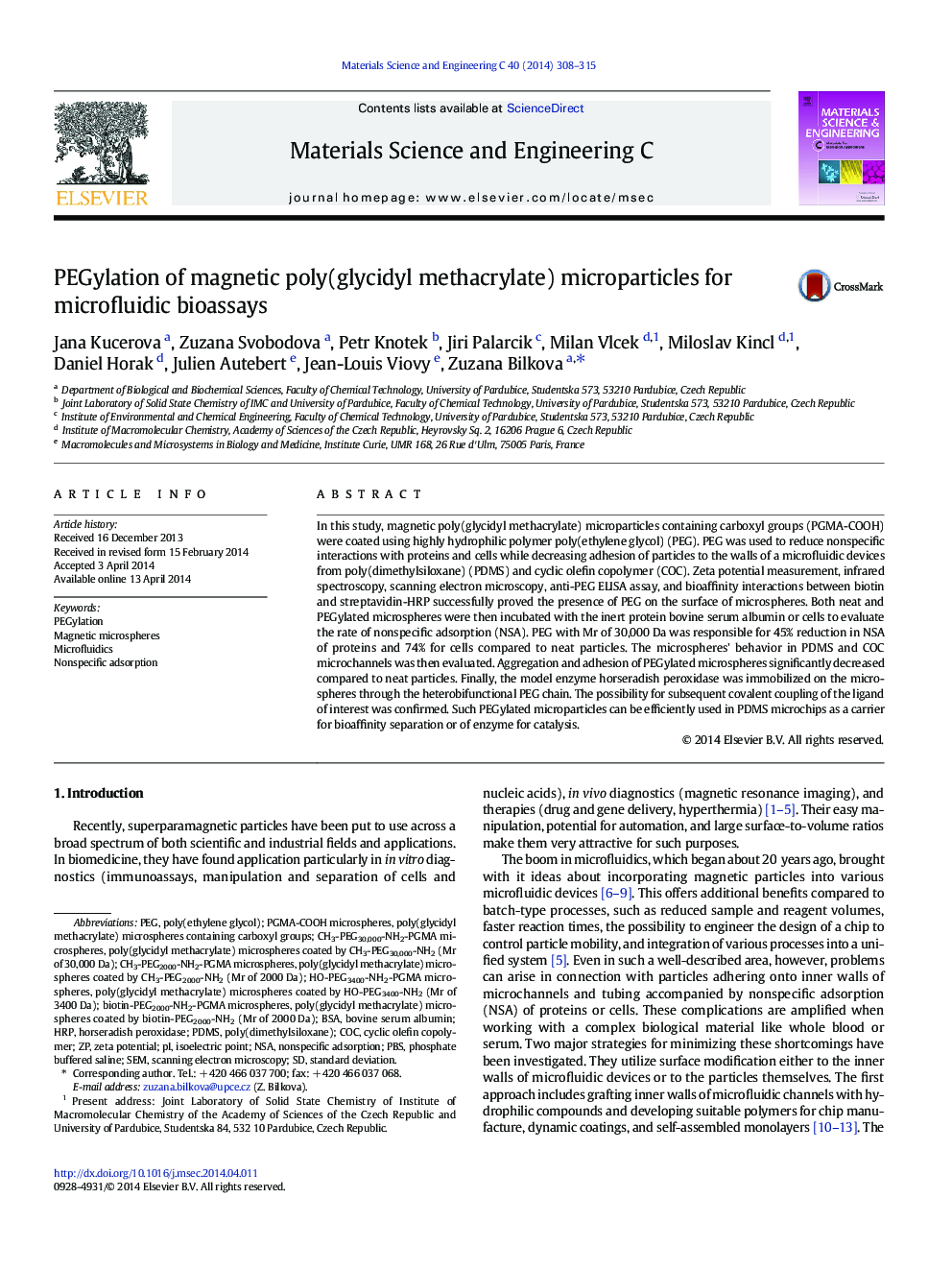| Article ID | Journal | Published Year | Pages | File Type |
|---|---|---|---|---|
| 1428347 | Materials Science and Engineering: C | 2014 | 8 Pages |
•Magnetic polymer microspheres with highly hydrophilic PEG coating were prepared.•PEG reduced microsphere adhesion in microchannels versus neat particles.•Suitability of methods for detecting PEG on magnetic microspheres was investigated.•PEG on microsphere surfaces decreased nonspecific adsorption of proteins and cells.
In this study, magnetic poly(glycidyl methacrylate) microparticles containing carboxyl groups (PGMA-COOH) were coated using highly hydrophilic polymer poly(ethylene glycol) (PEG). PEG was used to reduce nonspecific interactions with proteins and cells while decreasing adhesion of particles to the walls of a microfluidic devices from poly(dimethylsiloxane) (PDMS) and cyclic olefin copolymer (COC). Zeta potential measurement, infrared spectroscopy, scanning electron microscopy, anti-PEG ELISA assay, and bioaffinity interactions between biotin and streptavidin-HRP successfully proved the presence of PEG on the surface of microspheres. Both neat and PEGylated microspheres were then incubated with the inert protein bovine serum albumin or cells to evaluate the rate of nonspecific adsorption (NSA). PEG with Mr of 30,000 Da was responsible for 45% reduction in NSA of proteins and 74% for cells compared to neat particles. The microspheres' behavior in PDMS and COC microchannels was then evaluated. Aggregation and adhesion of PEGylated microspheres significantly decreased compared to neat particles. Finally, the model enzyme horseradish peroxidase was immobilized on the microspheres through the heterobifunctional PEG chain. The possibility for subsequent covalent coupling of the ligand of interest was confirmed. Such PEGylated microparticles can be efficiently used in PDMS microchips as a carrier for bioaffinity separation or of enzyme for catalysis.
Graphical abstractFigure optionsDownload full-size imageDownload as PowerPoint slide
